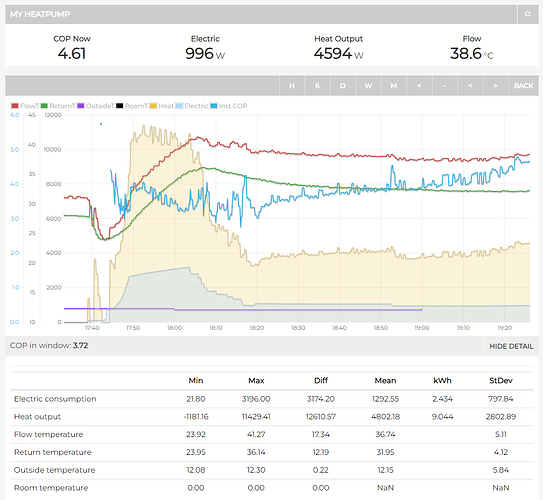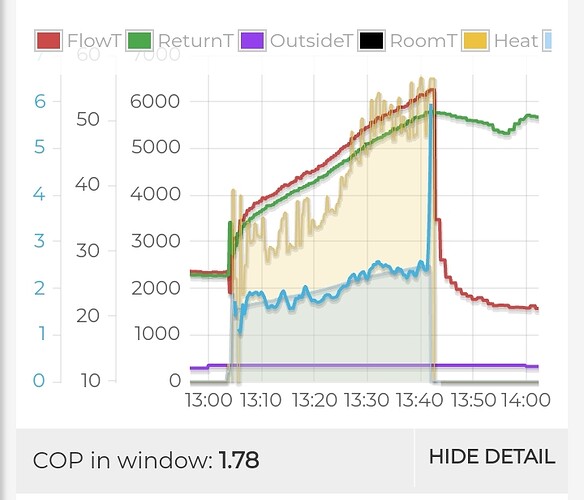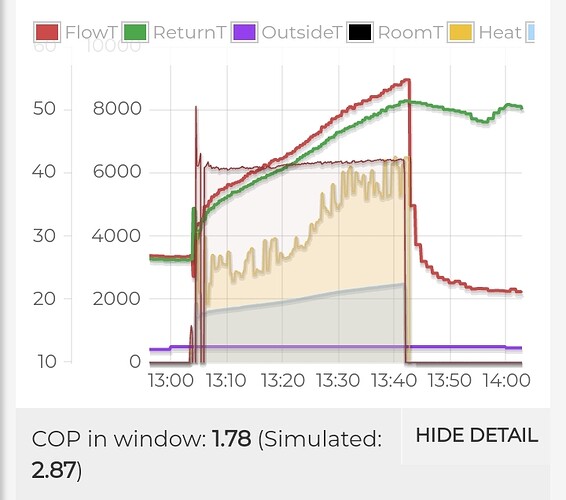The conservatory is not an issue for me, we can just not use it or use the electric under floor heating if it is too cold. But it never is too cold as the heat loss is not what they say.
But that is really not the issue.
The main house, the bit we need to heat loses 5.1kW at 21c indoors and -2.3c outside.
That s according to their heat loss calculations with the MCS requires air changes per hour based on a 1960 to 2000 build house with an epc of D
We have almost an epc of A so we actually lose less heat, about 4kW
So on a day like today the whole house including the conservatory needs about 3kW of heat, maybe a little less.
The house needs 2.5kW and the conservatory needs/can only take 500w
The heat pump produces a minimum of 4.6kW so the conservatory gets 500w and the house gets the remaining 4.1kW
As the house only needs 2.5kW or less it gets too hot.
The only way to solve it is to let the heat pump run and let the house get hotter and hotter or run shorter cycles at a much lower efficiency.
The colder it gets the less of a problem I have as the house needs more of the heat pump’s output.
My problem is that I don’t need 4.6kW of heat when it is 7c or above outside.
The minimum heat output of the heat pump is about 4.6kW and I can’t turn it down without losing efficiency.
The shorter cycles use the most electricity as it is most inefficient during the first 30 to 60 minutes of each heating cycle
I wanted a heat pump that can just run as continuously as possible putting in about the amount of heat that the house requires.
I can’t do that with this heat pump.
Bigger radiators will help with any heat pump I have, I will be able to run at lower flow temperatures even when it is really cold outside.
The heat pump we have will be great when it is colder, I don’t need to wait to find that out, I can already see that.
The problems are when it is between 5c and 15c outside when I need a bit of heat but not all that this heat pump produces.
That is where the part of the country I live in spends most of it’s time, it is rarely that cold here for long.




